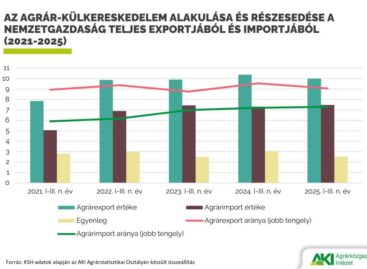Product innovations: At the gates of a new world
Healthy, natural and immune system strengthening food products are very popular and numerous companies are building portfolios with products like this. Chobai has recently announced launching a new probiotic yogurt drink range, while Uncle Matt rolled out the Ultimate Immune orange juice.
Since the outbreak of the pandemic in most cases ‘functional’ means ‘having a beneficial health effect’. Now that people are spending lots of time at home, they have more time to contemplate what they are eating, and worrying about the pandemic makes them care more about their health.
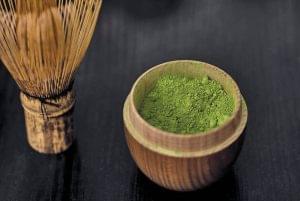
Matcha green tea powder as an ingredient – the demand for new tastes is forecast to increase this year
I want to know everything!
Shoppers have become much more cautious because of the pandemic, it is now much more important for them where a certain food product comes from and who manufactures it. Ensuring the transparency of the whole supply chain is essential and companies are busy developing the technology necessary for this, e.g. invisible barcodes, digital expiry labels.
Plant-based foods entered the spotlight a few years ago and this year they are likely to break all previous sales records. The stars of 2021 are expected to be algae, fungi, vegetables and pulses. They are sustainable, relatively cheap and easy to source, they contain many essential nutrients and are tasty as well.
New, numerous and diverse
Forecast is that consumer demand for new flavours is going to increase very much. Matcha, moringa, elder, cinnamon and rhubarb are all ingredients that can give an extra kick to the good old but sometimes bit boring dishes. Today shoppers aren’t content with simply buying garlic: they want to know what variety it is, where it has been grown and what makes it special. Consumers like it if there is a story behind food.
Genetic modification has completely transformed food production. The urge to make produce tastier and perfect-looking has made experts relying more and more on CRISPR genome editing and other genetic engineering technologies, with the help of which results can be produced faster and cheaper.

The urge to enhance taste and texture, as well as improve fruit and vegetable production do increasingly rely on CRISPR and other genetic engineering technologies
A chef in our kitchen
We have been cooking at home for a year and a half now, so sales of ready meals and convenience foods are growing. The role of chefs has undergone a transformation: during the lockdown many of them grabbed the opportunity to teach consumers and establish a relationship with them on Zoom and Instagram.

Kroger’s Chefbot recommends tailor-made recipes using ingredients that are available in the user’s pantry
Consumers are now more concerned with the environmental impact of their decisions, habits and lifestyles than ever before. According to a survey conducted by Kroger, the pandemic has made people even more conscious about efforts to reduce food waste. Shoppers like to purchase groceries which are eco-friendly ingredient- or packaging-wise.
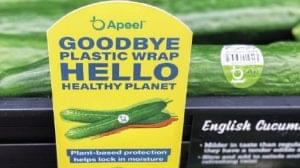
Apeel endeavours to extend vegetables’ shelf-life by replacing plastic packaging with an edible material applied on cucumbers’ skin that helps lock in moisture
Entering the comfort zone
For the next generation of consumers ‘comfort’ means much more than a cheeseburger with fries. They want global flavours, new brands and a healthy product selection that makes them feel better.

This year’s probably most awaited product innovation is the McPlant burger of McDonald’s
Plant-based alternatives are gaining ground, perhaps the most anticipated new innovation this year is the McPlant burger of McDonald’s. //
Even perfumes are digital now…
After digital art and digital clothes, say hello to digital perfume that can be accessed in non-fungible token (NFT) format.
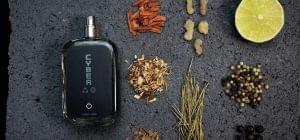
Cyber Eau de Parfum was created by Berlin-based Looks Lab and it is basically an image of the actual physical perfume’s molecular wavelength, from which a digital artist has made a special, limited edition creation. The perfume is also available in physical format.//
Brewery waste turned into food and fuel
Thanks to a new innovation by US university Virginia Tech, protein can now be extracted from the waste produced by brewing beer.
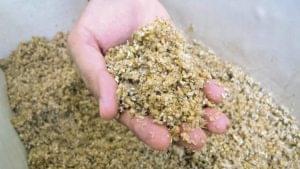
In the past the leftover cereal was utilised as animal feed, but with the new technology the protein concentrate from the utilised cereal can become food ingredient, biofuel component and many other things. //
Treasure hunt: A new shopper experience
A fashion store in Oslo is trying to create a better shopping environment for customers in a playful way.

Snøhetta designed a concept store for Norwegian brand Moniker that invites customers to a kind of treasure hunt. The three storeys of the shop have different designs and atmospheres, and the treasure hunt is actually more like a feeling, as part of which customers can discover new trend worlds in every corner. //
Related news
2025 was a black year for the Hungarian food industry: product lines under pressure on multiple fronts
🎧 Hallgasd a cikket: Lejátszás Szünet Folytatás Leállítás Nyelv: Auto…
Read more >Belgian startup uses AI to reduce food waste
🎧 Hallgasd a cikket: Lejátszás Szünet Folytatás Leállítás Nyelv: Auto…
Read more >Agricultural foreign trade surplus decreased in the first three quarters of 2025
🎧 Hallgasd a cikket: Lejátszás Szünet Folytatás Leállítás Nyelv: Auto…
Read more >Related news
Fidelity Kitekintés 2026: Ne becsüljük alá az inflációt!
🎧 Hallgasd a cikket: Lejátszás Szünet Folytatás Leállítás Nyelv: Auto…
Read more >Company Trend 2025 – domestic businesses under strong pressure, in a negative trend
🎧 Hallgasd a cikket: Lejátszás Szünet Folytatás Leállítás Nyelv: Auto…
Read more >Surprising ordering statistics: foodora sampled the ordering habits of Hungarians in 2025
🎧 Hallgasd a cikket: Lejátszás Szünet Folytatás Leállítás Nyelv: Auto…
Read more >



